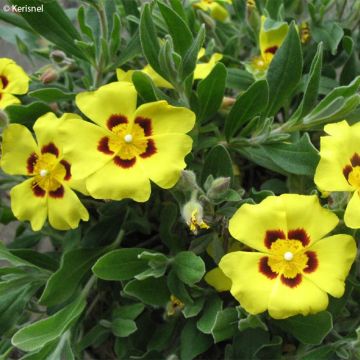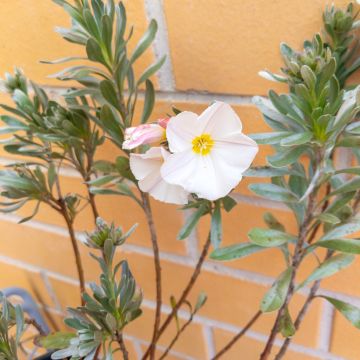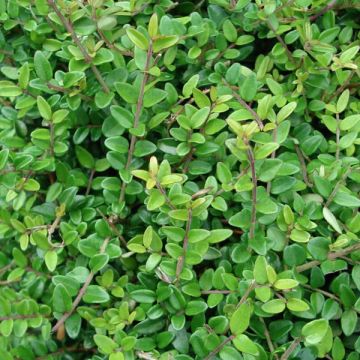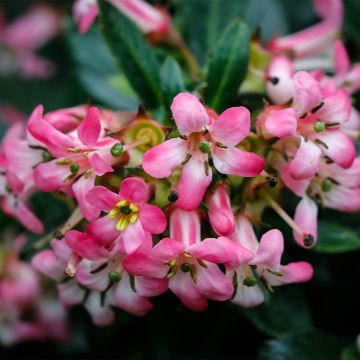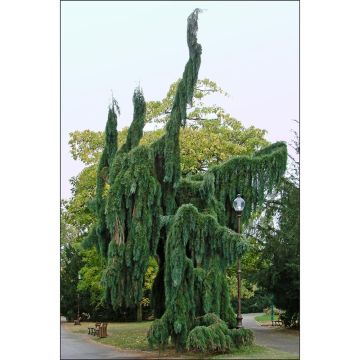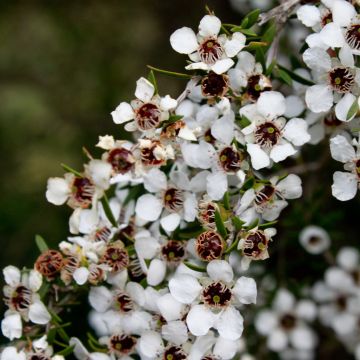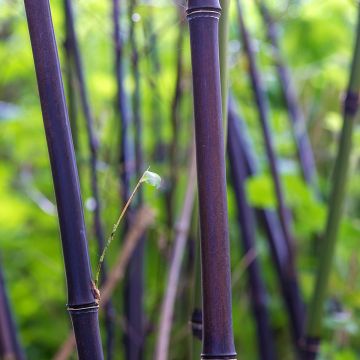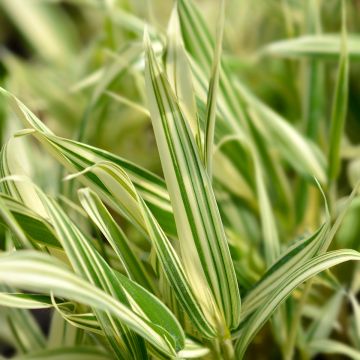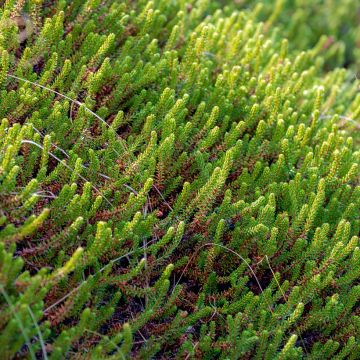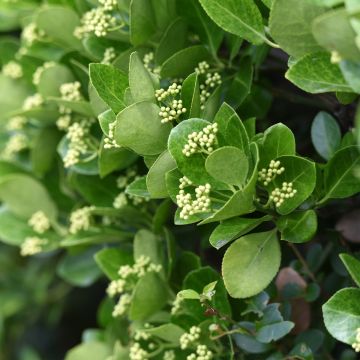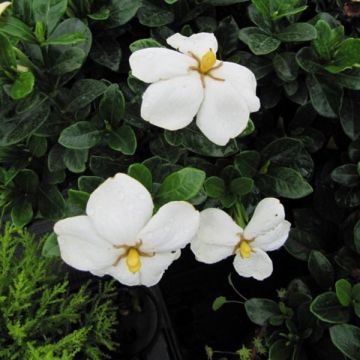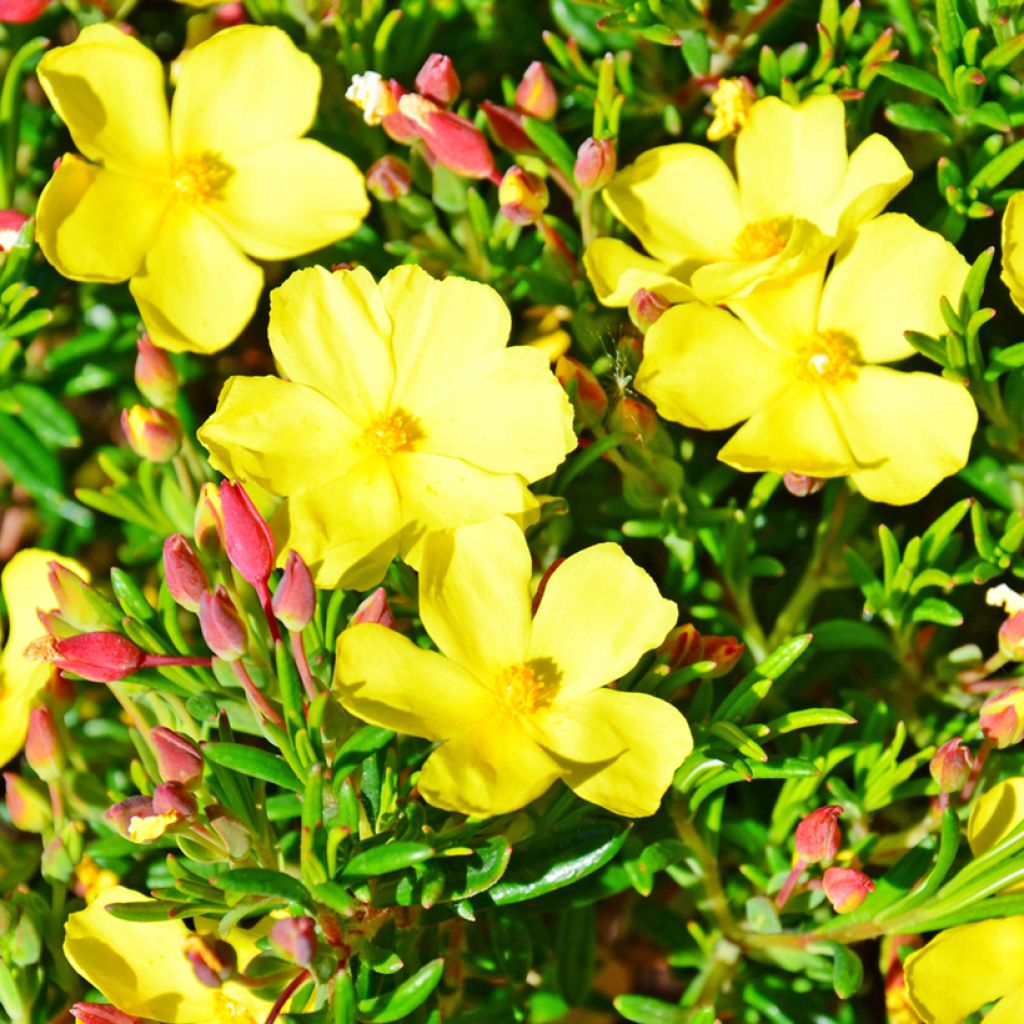

Halimium April Sun
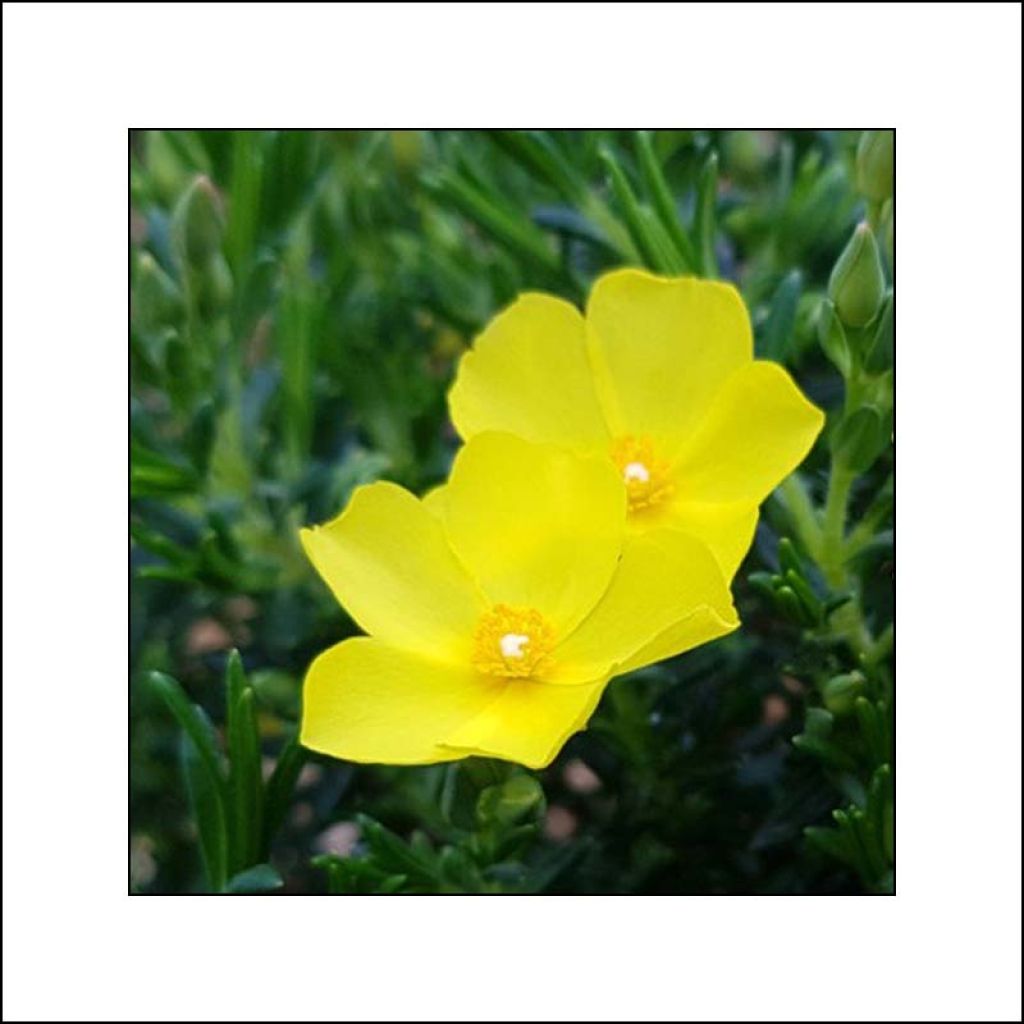

Halimium April Sun
Halimium April Sun
Halimium libanotis April Sun®
Rock Rose
This plant carries a 24 months recovery warranty
More information
We guarantee the quality of our plants for a full growing cycle, and will replace at our expense any plant that fails to recover under normal climatic and planting conditions.
From €5.90 for pickup delivery and €6.90 for home delivery
Express home delivery from €8.90.

Does this plant fit my garden?
Set up your Plantfit profile →
Description
Halimium April Sun, sometimes called Yellow Rockrose, is an evergreen undershrub native to the western Mediterranean, well adapted to poor, dry soils, just like cistus and helianthemums to which it is closely related. It is bushy and compact and with pretty, dark grey-green foliage and a long and abundant spring-to-summer flowering that is absolutely radiant, with small cups of bright lemon yellow flowers. Each flower lasts only one day, but they are constantly renewed over a long period from April to September, depending on the climate and soil moisture. Halimiums are charming discreet shrubs for rockeries, slopes or sunny terraces. They can be grown in any well-drained soil without excessive limestone, in full sun, with little water or fertilizer.
Halimium is also called Cistus libanotis according to certain nomenclatures. It is an undershrub of the cistaceae family, found in the wild in dry meadows or sandy heathlands in Spain, Portugal, and North Africa. It reaches an average size of 45 cm (17.7 in) in all directions, with a compact, almost prostrate habit that is kept dense by regular light pruning.
'April Sun', still relatively uncommon in cultivation, is a more floriferous selection of this botanical species. The very abundant and long-lasting flowering, takes place before or outside the period of drought and summer heat, from April to September depending on the climate and soil. At the end of the branches, green buds tinged with pink appear, grouped in clusters that open into small single flowers with a diameter of 3 cm (1.2 in), formed by 5 bright lemon yellow petals. The centre of the flower is occupied by a bouquet of yellow-orange stamens. Each flower disappears in the late afternoon, releasing a shower of petals on the ground. The countless buds ensure a long flowering. The leaves are evergreen, 2 cm (0.8 in) long, with slightly rolled edges. Downy when they emerge, they become dark grey-green at maturity and emit a balsamic aroma in hot, dry weather. The root system of this "rockrose" is both deep and branching, so powerful that it manages to infiltrate between fractured rocks or in dry sand to draw the slightest trace of moisture from deep down, while its superficial roots capture surface moisture. Its lifespan varies between 12 and 15 years in the garden. This plant is sensitive to root asphyxiation in overly compact and moist soil in winter. Its hardiness is around -12°C (10.4 °F) in properly drained soil.
Halimium April Sun is a plant for rockeries and poor soils, well adapted to summer drought: its delicate flowers hide a strong temperament and a robustness that withstands any test. Create a bed evoking the Mediterranean scrubland, by mixing the foliage and scents of lavender (blue, white, pink), rosemary (creeping or erect), thyme (T.vulgaris, T. polytrichus), sage (Salvia x jamensis or officinalis), oregano, teucriums (T.chamaedrys, T. x lucidrys, T. hircanicum), California poppies, catmints, ballotes and dryland euphorbias (E.characias, E. cyparissias). Growing in large pots is also possible, with proper drainage and abundant but spaced watering in summer, allowing the substrate to dry out between waterings.
Report an error about the product description
Halimium April Sun in pictures
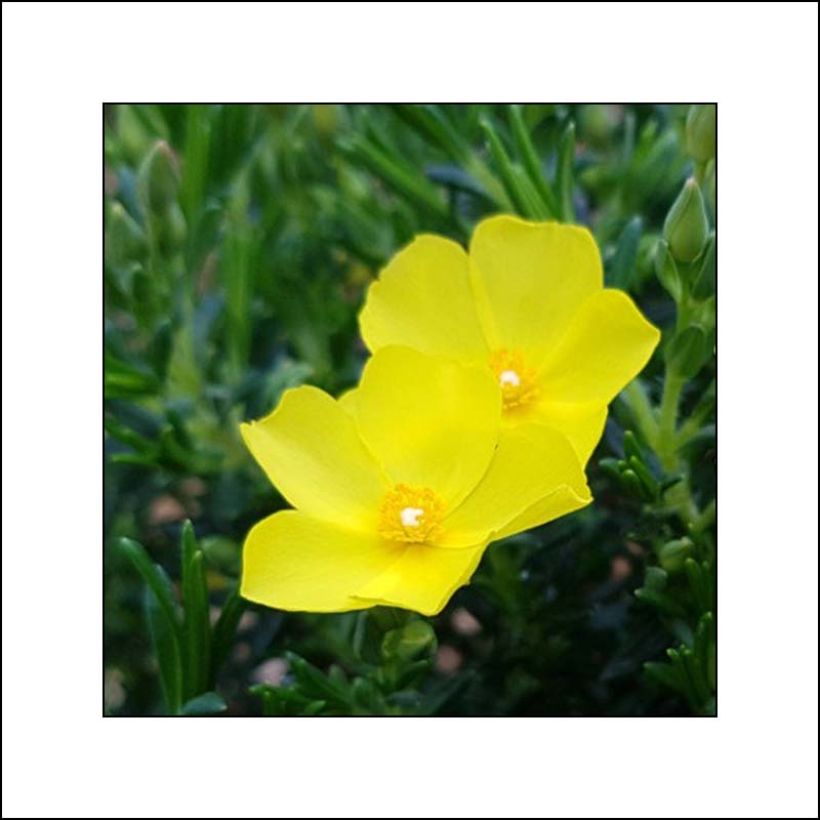

Plant habit
Flowering
Foliage
Botanical data
Halimium
libanotis
April Sun®
Cistaceae
Rock Rose
Mediterranean
Other Halimium
Planting and care
Halimium April Sun requires a perfectly drained, stony or sandy, poor, acidic, neutral or slightly chalky soil. Plant it after the last frost in the north, and in September-October in hot and dry climates. It enjoys the sun, but tolerates semi-shade quite well in very sunny climates. It dislikes icy winds that can destroy its flower buds. Under good conditions, it is hardy down to -12°C (10.4 °F) and will live longer. Mulch it in winter in the coldest regions and protect it from the cold as much as possible. Place it in the warmest corner of the garden, in full sun against a south-facing wall, in a stony or sandy slope in any substrate that does not retain moisture which would be fatal to it in winter or summer. The combination of heat and excessive humidity can lead to the development of a fungus that attacks the collar of the plant and will be fatal to it as much as a Siberian cold. You can lightly prune the stems after flowering to encourage the plant to branch out. Avoid severe pruning.
Propagation by semi-ripe cuttings in autumn.
Planting period
Intended location
Care
-
, onOrder confirmed
Reply from on Promesse de fleurs
Evergreen shrubs
Haven't found what you were looking for?
Hardiness is the lowest winter temperature a plant can endure without suffering serious damage or even dying. However, hardiness is affected by location (a sheltered area, such as a patio), protection (winter cover) and soil type (hardiness is improved by well-drained soil).

Photo Sharing Terms & Conditions
In order to encourage gardeners to interact and share their experiences, Promesse de fleurs offers various media enabling content to be uploaded onto its Site - in particular via the ‘Photo sharing’ module.
The User agrees to refrain from:
- Posting any content that is illegal, prejudicial, insulting, racist, inciteful to hatred, revisionist, contrary to public decency, that infringes on privacy or on the privacy rights of third parties, in particular the publicity rights of persons and goods, intellectual property rights, or the right to privacy.
- Submitting content on behalf of a third party;
- Impersonate the identity of a third party and/or publish any personal information about a third party;
In general, the User undertakes to refrain from any unethical behaviour.
All Content (in particular text, comments, files, images, photos, videos, creative works, etc.), which may be subject to property or intellectual property rights, image or other private rights, shall remain the property of the User, subject to the limited rights granted by the terms of the licence granted by Promesse de fleurs as stated below. Users are at liberty to publish or not to publish such Content on the Site, notably via the ‘Photo Sharing’ facility, and accept that this Content shall be made public and freely accessible, notably on the Internet.
Users further acknowledge, undertake to have ,and guarantee that they hold all necessary rights and permissions to publish such material on the Site, in particular with regard to the legislation in force pertaining to any privacy, property, intellectual property, image, or contractual rights, or rights of any other nature. By publishing such Content on the Site, Users acknowledge accepting full liability as publishers of the Content within the meaning of the law, and grant Promesse de fleurs, free of charge, an inclusive, worldwide licence for the said Content for the entire duration of its publication, including all reproduction, representation, up/downloading, displaying, performing, transmission, and storage rights.
Users also grant permission for their name to be linked to the Content and accept that this link may not always be made available.
By engaging in posting material, Users consent to their Content becoming automatically accessible on the Internet, in particular on other sites and/or blogs and/or web pages of the Promesse de fleurs site, including in particular social pages and the Promesse de fleurs catalogue.
Users may secure the removal of entrusted content free of charge by issuing a simple request via our contact form.
The flowering period indicated on our website applies to countries and regions located in USDA zone 8 (France, the United Kingdom, Ireland, the Netherlands, etc.)
It will vary according to where you live:
- In zones 9 to 10 (Italy, Spain, Greece, etc.), flowering will occur about 2 to 4 weeks earlier.
- In zones 6 to 7 (Germany, Poland, Slovenia, and lower mountainous regions), flowering will be delayed by 2 to 3 weeks.
- In zone 5 (Central Europe, Scandinavia), blooming will be delayed by 3 to 5 weeks.
In temperate climates, pruning of spring-flowering shrubs (forsythia, spireas, etc.) should be done just after flowering.
Pruning of summer-flowering shrubs (Indian Lilac, Perovskia, etc.) can be done in winter or spring.
In cold regions as well as with frost-sensitive plants, avoid pruning too early when severe frosts may still occur.
The planting period indicated on our website applies to countries and regions located in USDA zone 8 (France, United Kingdom, Ireland, Netherlands).
It will vary according to where you live:
- In Mediterranean zones (Marseille, Madrid, Milan, etc.), autumn and winter are the best planting periods.
- In continental zones (Strasbourg, Munich, Vienna, etc.), delay planting by 2 to 3 weeks in spring and bring it forward by 2 to 4 weeks in autumn.
- In mountainous regions (the Alps, Pyrenees, Carpathians, etc.), it is best to plant in late spring (May-June) or late summer (August-September).
The harvesting period indicated on our website applies to countries and regions in USDA zone 8 (France, England, Ireland, the Netherlands).
In colder areas (Scandinavia, Poland, Austria...) fruit and vegetable harvests are likely to be delayed by 3-4 weeks.
In warmer areas (Italy, Spain, Greece, etc.), harvesting will probably take place earlier, depending on weather conditions.
The sowing periods indicated on our website apply to countries and regions within USDA Zone 8 (France, UK, Ireland, Netherlands).
In colder areas (Scandinavia, Poland, Austria...), delay any outdoor sowing by 3-4 weeks, or sow under glass.
In warmer climes (Italy, Spain, Greece, etc.), bring outdoor sowing forward by a few weeks.

































